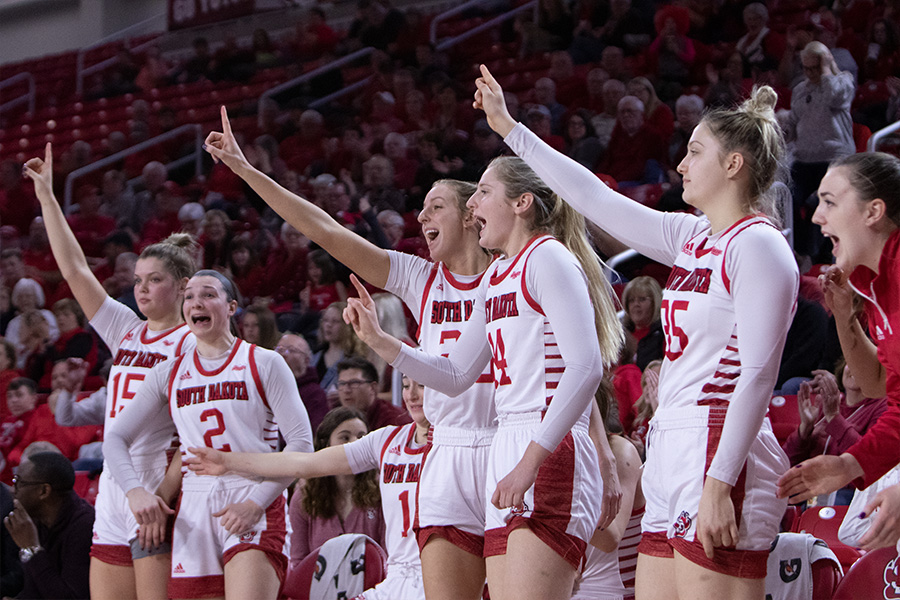Program Lets Springfield Prisoners See Visitors Via Video
SPRINGFIELD, S.D. (AP) — When the gates close behind them, Mike Durfee State Prison inmates lose more than their freedom.
The 1,200 inmates at the medium-security prison also lose their connection with family and friends. They miss not only everyday happenings but also major milestones ranging from births and deaths to growing children and aging parents and grandparents.
Maintaining those outside contacts is important as the inmates re-enter the outside world, according to prison officials.
“They need a good connection, because 90 percent of our inmates will return to their community or somewhere else,” Associate Warden Rebecca Schieffer told the Yankton Press and Dakotan ( ).
However, maintaining those connections is difficult in the best of circumstances, Schieffer said. Family members may face transportation, financial or health issues that make it difficult to visit, she added.
“Springfield is also in a rural area that’s a long distance from many of our inmates’ families,” Deputy Warden Jennifer Stanwick-Klimek said.
In response, the prison has implemented a video visit program that allows inmates to schedule interactive visits with approved family and friends. The video visit, launched in February 2014, is the only program of its kind in the South Dakota corrections system.
“This all started with Warden (Bob) Dooley wanting to help families who were long distances away from inmates and had challenges in making visits,” Schieffer said. “We began to brainstorm if there was some technological way (of bringing them together).”
The effort resulted in the creation of the Skype video visits, using five computer work stations, webcams audio speakers and headphones. The stations are located in Science Hall on the prison grounds, Schieffer said. The visits are offered from 8:25 a.m. to 4 p.m. weekdays, along with designated Wednesday evenings.
The prison expanded its number of video visits during the week before Christmas so more inmates could connect with their families for the holidays, Schieffer added.
“We offer 30-minute time slots for each prisoner, with visits limited to 15 minutes,” she said. “The rest of the time allows for the transfer of prisoners in and out of the area.”
Inmates and their loved ones can use the video visits for free, Stanwick-Klimek said. “There are other facilities that charge for visits, but we don’t charge for it,” she said.
The visitors have “arrived” from around the nation and even Mexico, England and Germany.
Prison officials have been pleasantly surprised — and even amused — at some of the families’ subjects for video visits, Schieffer said.
“We had a woman who turned (the screen) around to her couch and showed her Chihuahua,” she said. “Her pet was something important in her life, and she wanted to share it with the inmate.”
Corrections officer Nick Kruse, who monitors the video stations, observed a special moment for one father.
“We had one inmate whose son had a birthday,” Kruse said. “During the video visit, they brought out a cake and lit it. They sang ‘Happy Birthday,’ and the inmate could join them. With the video, the prisoners can share everyday life with their families.”
The video may represent the only opportunity for families to see inmates, Schieffer said.
“We had one grandmother who hadn’t seen her grandson since he was in prison. Now, she could see and chat with him,” she said. “Another time, we had a mother who hadn’t seen her son for 10 years. These videos are important for people who can’t see their immediate family.”
Even regular visitors may find the need for video visits on occasion, Schieffer said. “There may be problems with the weather, or the car may break down,” she said.
The videos also allow inmates to experiences events they can’t attend in person, such as a child’s concert or dance recital, Stanwick-Klimek said. “Or what better way to connect with a child than to read a book together?” she asked.
In some instances, the video visits allow the inmate to say a final goodbye to a family member, Stanwick-Klimek said.
“We don’t do funeral escorts, but we have arranged for the family to have Skype visits for funerals or for bedside visits with terminally ill family members,” she said.
Compared to in-person visits, video eliminates concerns about physical contact between the inmate and an outside party, Schieffer said.
“You can’t pass contraband through the monitor,” she added.
The family member or friend initiates the request for visits, which need to be scheduled a week ahead of the desired visit day. The outside party must appear on a list of approved visitors, and the inmate holds the right to refuse the visit. The inmate and visiting party receive a designated time slot.
In addition, inmates are limited in their number of video visits during the week and month.
The video visits aren’t considered a frill, Schieffer said.
“When inmates are pro-social, there are (fewer) disciplinary issues and more side benefits,” she said. “It also helps with their re-entry into society. We want them to be successful.”
The program has been launched and maintained at minimal cost, Stanwick-Klimek noted. A webcam was purchased, but the program uses Skype and the computers were obtained from state surplus property.
Also, no additional staff members were hired for monitoring the video visits, she said. The officers are already on duty monitoring other inmates, she added.
The inmates wear headphones and look straight ahead so their conversations aren’t overheard at neighboring stations. However, an officer can listen to the conversations and monitor the screens at the officer’s desk or by standing next to the inmates’ screens.
The officer controls the five stations and can end a visit in the event of any dangerous, illegal or inappropriate conversation or actions in the room or with the video visitor.
Prison staff members are allowed to sign up for shifts to monitor the video visits, Schieffer said. The assignment has become popular, she said.
“The officer knows he or she will work days with no weekends or holidays,” she said. “The younger (staff members) gravitate toward it because they use Skype already.”
However, that doesn’t the mean the video visits were immediately popular with all staff members, Stanwick-Klimek said. The idea raised some skepticism among those who worried what could arise, she added.
“Initially, there was opposition from staff who worried this might open up a can of worms,” she said. “I think there were some concerns that we would have ‘flashing’ or other inappropriate behavior from the person on the other end. But if something like that ever happened, the inmates know the video visits are a privilege they can lose.”
In contrast to initial concerns, the video visits have become so successful the program has expanded, Schieffer said.
“At first, we didn’t know if we would have many inmates making video visits,” she said. “The first year, we offered it to one housing unit. Now, we have expanded it to four units.”
Kruse has seen increased demand for the video visits. “The stations have been filling up, and the Wednesday nights are becoming more popular,” he said.
Schieffer believes the video visits stand to see even more usage in the coming months.
“Our numbers have been steadily growing,” she said. “The word is spreading more and more that we offer (the video visits), and people are becoming more and more familiar with technology and the Internet.”
The video visits could become implemented in other South Dakota correctional facilities, Stanwick-Klimek said. In the meantime, she looks for the video visits to continue offering the Springfield inmates a personal bond to their loved ones.
In turn, the continued contact will serve the inmate well after his release, she added.
“That connection remains so important as prisoners get ready to re-enter the outside world,” she said. “They can relate to their families in ways they never could before.”
___
Information from: Yankton Press and Dakotan,


